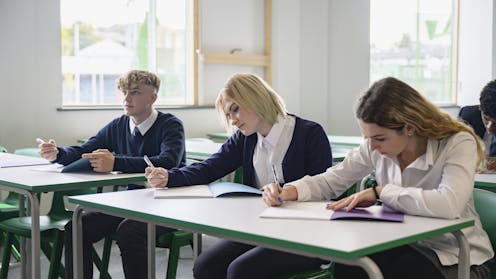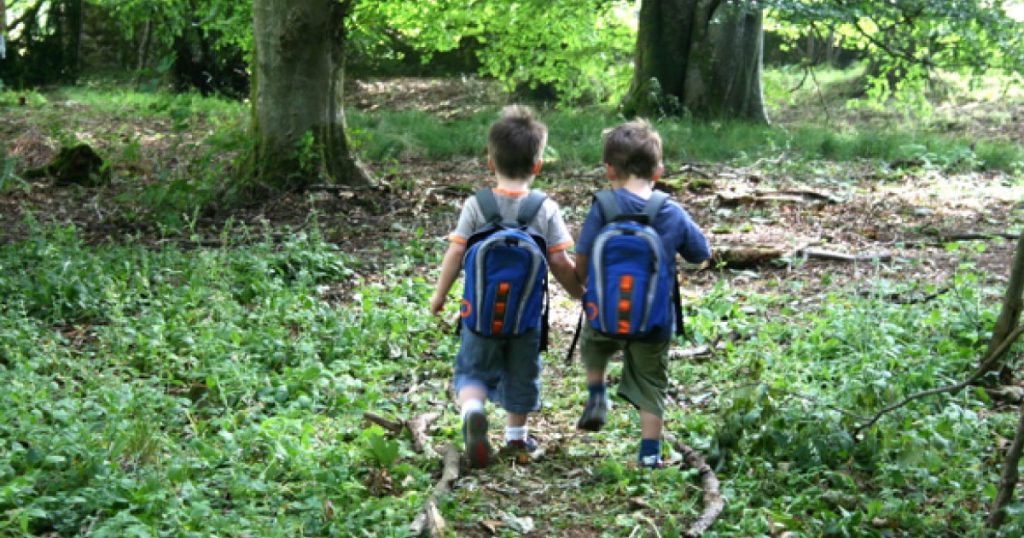
If you had to do a test, how would you respond? Would you relish the chance to demonstrate your knowledge? Or worry you were about to fall short of the mark and embarrass yourself?
Research tells us students’ attitudes towards taking tests or doing exams can have an impact on their performance. This is because what they think about themselves, the test questions, and the consequences of the test can impact their motivation and focus during the test.
To date, this research has largely grouped students into two main types of test-takers. One group sees tests as a challenge they can cope with. Another sees tests as a threat they will not be able to handle.
But some studies have suggested these groupings may be too broad to give useful support to students.
In our new study, the largest of its kind, we explored Australian high school students taking a science test. By capturing diverse psychological data, such as students’ brainwaves and stress responses, we found there are four types of test-takers.
Our study
We studied 244 male and female students from three Sydney schools in years 8 to 10 as they did a science test.
It is the largest study of its kind to collate diverse information on students’ brain wave activity, physiological responses and self-reported attitudes while they are doing a test.
This is significant because this kind of research is usually done in labs with large functional magnetic resonance imaging (fMRI) machines, a setting quite different from a real classroom. Our approach allowed us to get a well-rounded look at the different psychological indicators at play when students do a test.
The students were part of a larger research project looking at science engagement. The test was developed by our research team, with guidance from science teachers.
How we set up our research
Students wore an electroencephalogram (EEG) headset during the test to capture their brain activity, via alpha and theta waves.
The alpha waves measured how much students were focusing on the test and the theta waves looked at the strain on their working memory (which students need to use to solve problems in a test). Both these capacities can be disrupted if a person feels threatened or stressed.
Students also wore a biometric wristband that measured their sweat glands. In our study, lower “electrodermal activity” scores indicated a calmer and more positive state, and higher scores indicated stress.
Midway through the test, students reported how confident they were about meeting the demands of the test and how anxious they felt about not meeting the demands.
We then used a statistical technique called latent profile analysis to help us identify different types of test-takers. This technique enables researchers to identify subgroups based on certain variables.
4 types of test-takers
We were able to identify four groups of students who had distinct patterns on these different measures.
1. Confident striders: these students took the test “in their stride”. They reported high confidence and low anxiety, and recorded an optimal balance of attention and working memory. Their wristband readings indicated they were calm. They made up 27% of the group.
2. Confident battlers: also reported they were confident and low in anxiety, but other data suggested they were battling behind the scenes. Their wristband readings suggested their “fight or flight” system was aroused. Their brain waves also showed their working memory did not have as much capacity to problem-solve as the confident striders, which also indicates a level of stress. They made up 8% of the group.
3. Ambivalents: these students were average across all of the indicators, reflecting that they didn’t see the test as a challenge or a threat. They made up 38% of the group.
4. Fearers: reported low confidence and high anxiety. Their wristband readings indicated they were stressed, and their brain wave readings showed they were not directing much direction to the actual test. They made up 27% of the group.
How did these test-takers perform on the test?
We then looked at the test performance for each of these four test-takers. Not surprisingly, confident striders were the highest achievers. Confident battlers also did well on the test, but not as well as striders. Ambivalents scored lower on the test, but not as low as fearers.
These results were measured against students’ previous science results (in school tests and assignments), because we wanted to know whether students performed above or below their usual level. This was to ensure we were measuring the impact of students’ psychological approach to the test, rather than just how good they are at science.
Taken together, our findings suggest that believing in themselves, confronting any fearful thoughts, and having a clear mind to concentrate on the task, puts students in the strongest position to perform well.
What can teachers do?
Our findings also provide guidance for teachers to target the factors that defined the test-takers.
To help build confidence, students can be taught how to challenge doubts about themselves. This can include reminding students of their strengths as they approach the test. For example, students could reflect on how well they conducted the experiments in their science lessons if the test includes questions about those experiments.
To ease anxiety, students can be taught constructive ways to think about challenging schoolwork. For example, students can remind themselves of the knowledge they have learned that will be helpful. Students can also be taught to use breathing and mindfulness exercises to ease stress. This can reduce a physical stress response and help focus their attention on the task at hand.
To optimise working memory, for in-class assessments teachers can match the test to students’ abilities and prior learning. This means the test is challenging enough, but not so overwhelming that it excessively burdens working memory while they are problem solving. This can also help build confidence ahead of other, higher-stakes exams.
![]()
Andrew J. Martin received funding from the Australian Research Council and The King’s School for this research. He also receives funding from Commonwealth and state departments of education.
Emma Burns receives funding from the Australian Research Council, is an associate editor for the Australian Educational Researcher and is on the board of the Australian Educational Research Organisation.
Joel Pearson receives funding from The Australian Research Council.
Rebecca J. Collie receives funding from Commonwealth and State Departments of Education. She has also received funding from the Australian Research Council.
Roger Kennett received funding from the Australian Research Council and The King’s School for this research.
Read More: Read More



